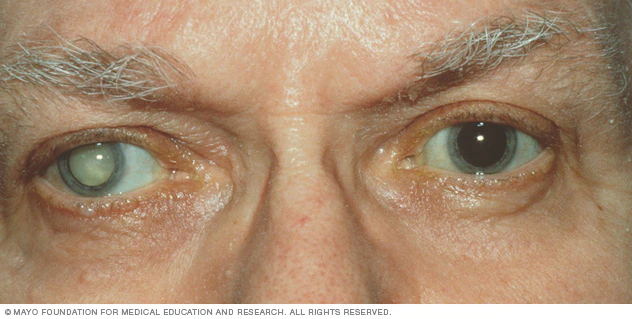Cataracts
Cataracts are a common eye condition where the lens of the eye becomes cloudy, leading to a decrease in vision. They are most often related to aging but can have other causes.
Causes of Cataracts
- Aging: The most common cause; changes in the lens structure over time.
- Genetic Factors: Family history may increase risk.
- Medical Conditions: Diabetes, obesity, hypertension.
- Lifestyle Factors: Smoking, excessive alcohol use.
- Prolonged Exposure to Sunlight: UV radiation can contribute to lens damage.
- Previous Eye Injury or Surgery: Can lead to secondary cataracts.
- Long-term Use of Certain Medications: Particularly corticosteroids.
- Other Factors: Radiation exposure, certain metabolic disorders.
Diagnosis of Cataracts
- History
- Vision Changes: Blurred vision, difficulty with bright lights, seeing halos, changes in color perception, or double vision in one eye.
- Onset and Progression: When symptoms began and how they’ve progressed.
- Medical History: Diabetes, previous eye conditions, medication use.
- Family History: Of cataracts or other eye conditions.
- Physical Examination
- Visual Acuity Test: To assess the sharpness of vision.
- Slit-lamp Examination: A microscope to examine the structures of the eye in detail.
- Dilated Eye Exam: Dilation of the pupil to examine the retina and optic nerve.
- Investigations
- Tonometry: To measure the pressure inside the eye, ruling out glaucoma.
- Retinal Examination: To assess health behind the lens.
Differential Diagnosis (DDx)
- Glaucoma: Increased intraocular pressure causing optic nerve damage.
- Age-Related Macular Degeneration: Deterioration of the central part of the retina.
- Diabetic Retinopathy: Effects of diabetes on the blood vessels of the retina.
- Corneal Opacities: Scarring or clouding of the cornea.
- Retinitis Pigmentosa: A group of inherited disorders that affect the retina’s ability to respond to light.
- Vitreous Hemorrhage: Bleeding into the vitreous humor inside the eye.
Management of Cataracts
- Non-Surgical Treatment:
- Updated Eyeglass Prescription: To improve vision despite early cataracts.
- Anti-glare Sunglasses: To reduce sensitivity to light.
- Magnifying Lenses: To assist with close-up vision tasks.
- Surgical Treatment:
- Cataract Surgery: The only effective treatment for advanced cataracts. The cloudy lens is removed and usually replaced with a clear artificial lens (intraocular lens, or IOL).
- Phacoemulsification: A common method where the lens is emulsified with an ultrasonic handpiece and aspirated from the eye.
- Extracapsular Cataract Extraction: Removal of the lens leaving the elastic capsule intact, used for very advanced cataracts.
- Postoperative Care:
- Eye Drops: To prevent infection and reduce inflammation.
- Avoiding Certain Activities: Such as heavy lifting or rubbing the eye to ensure proper healing.
- Regular Monitoring and Follow-Up:
- Monitoring for Complications: Such as infection or changes in intraocular pressure.
- Post-Surgery Vision Assessments: To evaluate the need for glasses or adjustments.
Conclusion
Cataracts are typically related to aging and are managed effectively with surgery, which is generally safe and highly successful. Regular eye examinations are important for early detection and management. Lifestyle modifications like UV-protective eyewear and controlling systemic diseases like diabetes can help slow the progression of cataracts. Coordination with an ophthalmologist is crucial for optimal management.

